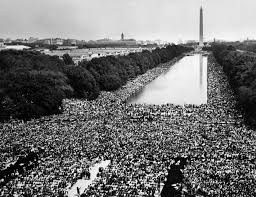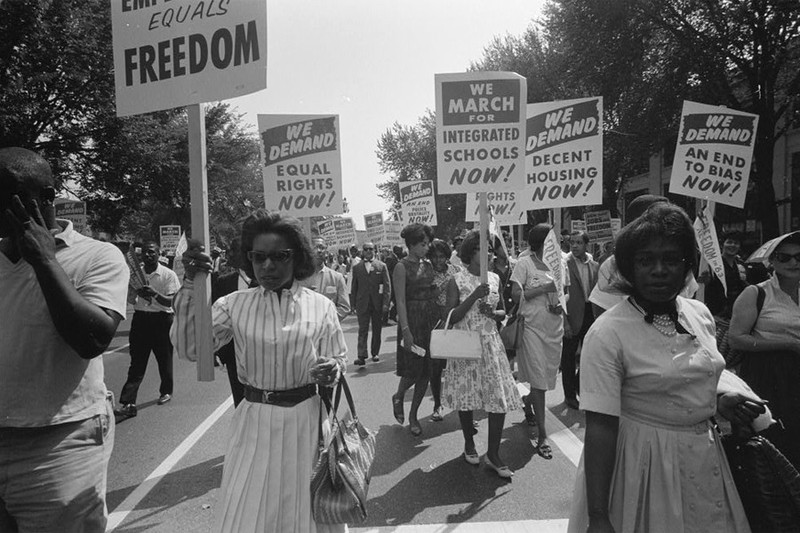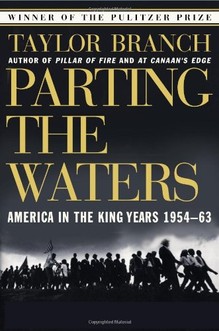Martin Luther King, Jr's "I Have a Dream" Speech
Introduction
Text-to-speech Audio
Images
Crowd at the March on Washington

Protesters at the March on Washington

Taylor Branch, Parting the Waters : America in the King Years 1954-63-click the link below for more information about this book.

Backstory and Context
Text-to-speech Audio
A. Philip Randolph and Bayard Rustin began planning for the march in December 1962. Randolph was a prominent figure in the Civil Rights Movement, the American labor movement, and the socialist political party. Before entering the realm of politics, Randolph was an actor who was instrumental in helping form the Shakespearean Society in Harlem. Rustin was supported civil rights, socialism, and gay rights. An activist for most of his life and was exceptionally well educated. His extensive academic training included completing an activist training program led by the American Friends Service Committee (AFSC). The AFSC is an organization dedicated to promoting peace and social justice around the world and founded by the Religious Society of Friends (Quakers).
The March on Washington was intended to challenge President Kennedy's lukewarm support of civil rights legislation. The march is often credited with helping promote the Civil Rights Act of 1964, which passed the Senate only after several Southern legislators attempted to filibuster the bill. President Lyndon B. Johnson signed the bill into law on July 2, 1964. This law made it illegal to discriminate based on race, color, religion, sex, or national origin.
The day included six speeches by leaders of the largest civil rights organizations. King's speech drew attention to the continued injustices faced by African Americans in the form of police brutality, economic inequality, and the failure of many states to protect the voting rights of African American citizens. Future congressman John Lewis, the leader of Student Non-Violent Coordinating Committee delivered an even stronger indictment of the status quo even after leaders of the event coerced him into moderating the tone of the speech and removing some of his calls for action. The original draft of Lewis' speech is linked below.
Cite This Entry
Admin, Clio and Michael Tanner. "Martin Luther King, Jr's "I Have a Dream" Speech." Clio: Your Guide to History. April 4, 2018. Accessed August 13, 2025. https://theclio.com/entry/14698
Sources
Dyson, Michael Eric. I May Not Get There With You: The True Martin Luther King, Jr. New York: Free Press, 2000.
Branch, Taylor. Pillar of Fire: America in the King Years, 1963-65 New York: Simon and Schuster, 1988.

